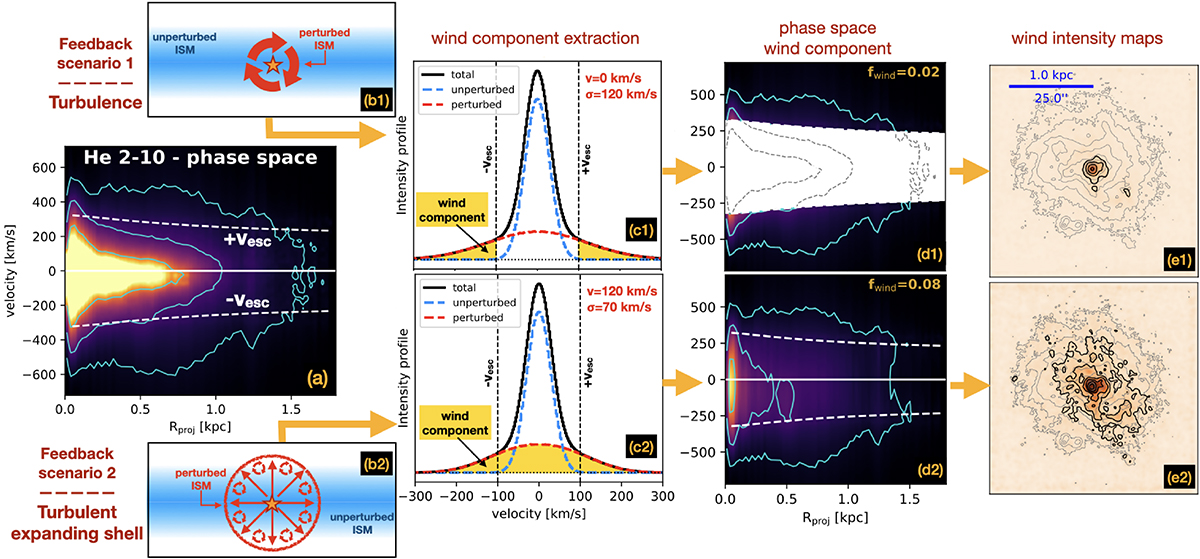Fig. 6.

Download original image
Scheme illustrating the extraction of the wind component from the Hα velocity cube of He 2-10. (a): phase-space distribution for the whole Hα emission. Instrumental broadening is removed via the multi-Gaussian decomposition. Cyan contours encompass 50%, 70%, and 90% of the total Hα flux. White-dashed lines show the escape speed radial profile (see Sect. 4.1). (b): the two feedback scenarios of Sect. 4.2. In (b1) feedback injects turbulence in the ISM, but produces no bulk flow. In (b2) feedback produces the spherical expansion of a turbulent shell of gas (TES). (c): illustration of the effects of feedback on a single velocity profile. For both scenarios we assume vesc of 100 km s−1, a systemic velocity of 0 km s−1, and velocity dispersion of 30 km s−1 for the unperturbed gas (blue-dashed curve). The component perturbed by feedback (red-dashed curve) is derived by assuming a shell expansion speed, v, and a velocity dispersion, σ, indicated in the top-right corner. Both scenarios feature very similar broad components. In the turbulent case (c1), only the flux at |v|> vesc (highlighted in yellow) is eligible as ‘wind’. In the TES case, given that v > vesc, the whole component will be associated with a wind. (d): phase-space plots for the wind component alone, extracted by processing each Hα velocity profile as discussed in Sect. 4.2. Contours are defined as in panel a. (e): integrated Hα intensity maps of the wind component. Iso-intensity contours for the total Hα emission are shown in grey, as a reference.
Current usage metrics show cumulative count of Article Views (full-text article views including HTML views, PDF and ePub downloads, according to the available data) and Abstracts Views on Vision4Press platform.
Data correspond to usage on the plateform after 2015. The current usage metrics is available 48-96 hours after online publication and is updated daily on week days.
Initial download of the metrics may take a while.


